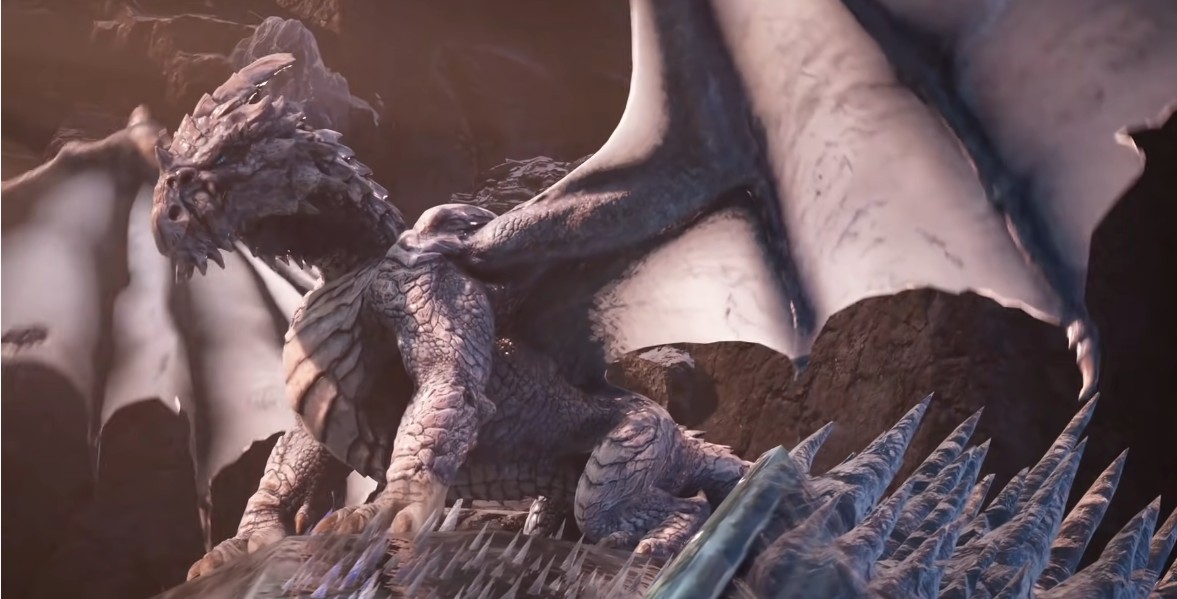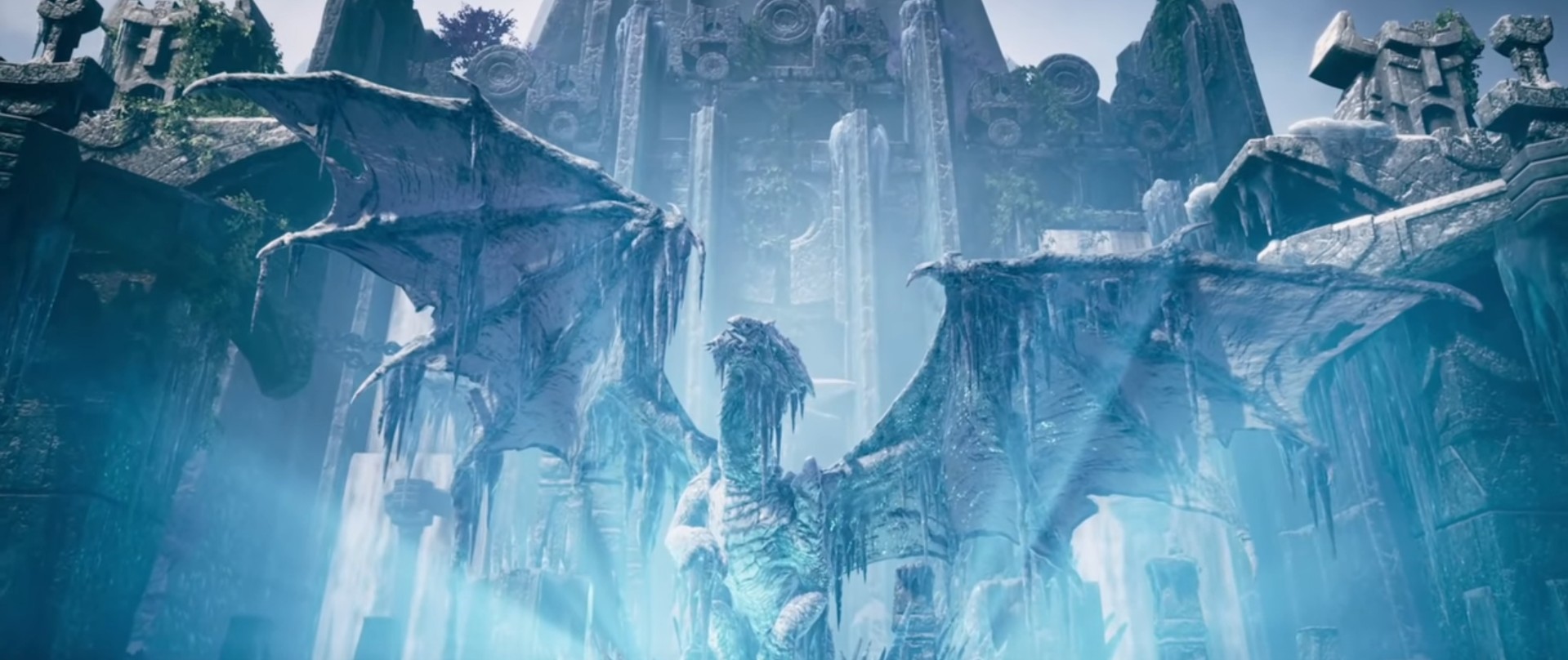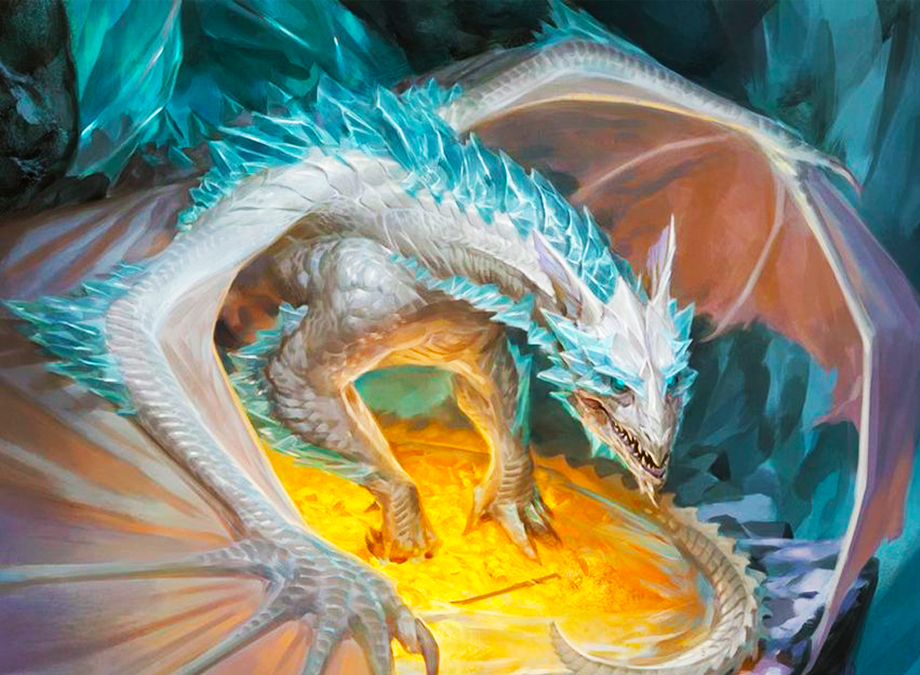Even amongst the most powerful beings of the realm, there will always be a separation between the memorable, and the forgettable. For every Wulfgar, there is a Dorn Redbear. For every Drizzt, an Illius.
“Don’t you mean Dorn Il-Khan?” The question is presented. “No, I do not.” The answer. “Who is Illius?” You may ask. “My point exactly,” I would respond.
And so it is even amongst those creatures most arcane and powerful, those who believe themselves rulers over the skies and lands both. I speak, of course, of dragons. While many of the old wyrms have storied histories and deeds of magnificence, there are the less noble. The dragons who fall to adventurers, their stashes stolen as the reward to a mid-level adventure.
For every Iymrith, there is an Icingdeath.
Welcome to Lore-Win, the Dungeons and Dragons lore series. I, as always, am your humble Loremaster, Sokar. Today we’re doing something a little out of the ordinary. Instead of delving deep into the lore of a single, grand figure or location in the Realms, we’ll be going over a few topics with less meat on their bones.
Figuratively speaking, of course. Dragons have quite a bit of meat.
A trio of dragons who exist more to further the stories of others, than to inspire tales in bards themselves.
Icingdeath
Of the three dragons I’m covering today, the name Icingdeath is likely the most well-known.
Though, perhaps not in the same form.
And no, I don't mean card form.
In the year 1356 DR, in the northern lands of Icewind Dale, a white dragon named Icingdeath slumbered in its lair, hidden beneath the subterranean hot springs of Evermelt, which in turn laid within a cave at the base of the glacial wasteland of Reghed Glacier.
The Evermelt had seemingly-serene, still turquoise waters that shone like glittering gold. This appearance was deceiving, however. In truth, the waters here had a strong undercurrent that would drag those who were caught beneath the Evermelt into a tunnel that opened up into a cave.
A cave inhabited by a white dragon who went by the name of Ingeloakastimizilian. Or, for all of us who don’t speak draconic: Icingdeath.
Here, Icingdeath slept atop a bed of ice that had frozen over its hoard of treasures. However, the dragon itself was the treasure that drew the interest of one particular barbarian. Wulfgar, a barbarian of The Tribe of the Elk who inhabited Icewind Dale, sought out the white wyrm with one intent: to slay him.
Seeking a deed worthy enough to give him claim to leadership over his tribe, Wulgar sought to slay the dragon and claim a trophy as proof of his deed.
And perhaps this deed could have been accomplished quickly, had Wulfgar taken a stealthy approach. But, stealth is often not a barbarian’s tool. And never so when honour is at stake.
After swimming through the waters of the Evermelt and creeping into the lair of Icingdeath, Wulfgar approached the slumbering dragon and roared out a challenge. Icingdeath responded in kind, roaring out an icy breath as it sought to slay the barbarian where he stood. Of course, Wulfgar had been followed and was soon aided by the hero, Drizzt Do’Urden.
The two companions fought well together. Drizzt placed an orb of magical darkness upon Icingdeath’s head, while Wulfgar used his enchanted hammer Aegis-fang to land blow after blow upon the wyrm. Soon, Wulfgar struck a fatal blow, breaking a massive icicle free with Aegis-fang and impaling Icingdeath upon it.
Wulfgar claimed his reward, taking a trophy to challenge the chieftain of the Tribe of the Elk for the right to lead his people. Drizzt meanwhile took a treasure of his own, a black, adamantine scimitar enchanted with frost magic that the drow named Icingdeath in turn.
Not Quite Over
But, as such matters tend to be, the matter of Icingdeath’s death was not quite so simple.
As presented in Dark Alliance, Icingdeath had not been a solitary dragon. He had, in fact, had a mate. The white dragon Icewind, also known as the Northern Gale, and the Queen of Storms. When the crystal shard, Crenshinibon reawoke in the north and called forth a Dark Alliance of those seeking its power, Icewind was one of the many who sought after the artefact.

Icewind in all her glory.
Source: Dungeons & Dragons: Dark Alliance
Waking from centuries of slumber, Icewind was enraged to find “vermin” inhabiting “her” Dale. She swore to freeze those who had taken both her land and her mate and leave their corpses as decorations for Icingdeath’s tomb. A tomb which she had decorated with Icingdeath’s frozen body.
But she was not unopposed, as the Companions of Mithral Hall stood against her and the rest of the Dark Alliance. Not that Icewind seemed to mind, as vengeance on her mate’s “murderers” was chief among her thoughts.
But she fared as well as her mate in the battle that ensued when the Companions reached her domain.
An Inferno in the North
In a land to the north sits a forest known as the High Forest. It is a region that serves a reminder of when the world was ruled by elves, dragons, and giants. In the center of these woods stand a range of mountains known as the Star Mounts.
These mountains proved inhospitable and difficult to traverse, with steep rock faces and no known passes penetrating them. However, the mountains also hid an elevated valley away from the rest of the world, and the mountains themselves proved to be the subject of many rumours.
Tales spread that on peaceful nights, flashing lights shone on the mountains that would either attract or banish dragons and other flying creatures that dared to approach. In fact, it was rumoured that a great wyrm might even make its home in the mountains, or that wizards or sorcerers lived atop them.
These rumours proved to not entirely be hearsay.
The Star Mounts indeed contained a settlement, though one long abandoned by the elves who constructed it. Flying creatures also lived amongst the peaks, namely aarakrocas who built nests near caves where dragons sheltered.
And of course, among them was a red wyrm who held many caves within the Star Mounts by the name of Imvaernarhro. Or, Inferno if you prefer.
In case the name didn't give away where he lived.
Inferno of the Star Mounts grew famous for two things. First, a dominion over fire magic, and second, having so many hoards of treasure that Elminster himself estimated that over twelve million gold was hidden within various caves about the Star Mounts.
But unlike others of his kind, Inferno was a solitary dragon. He preferred to avoid competition or interaction with other wyrms. Indeed, Inferno even preferred to hunt away from others. The red dragon had a portal that allowed him to travel to a continent far from Faerun to hunt plains full of beasts.
Thus, he could feast to his heart’s content without any interference.
While Inferno has no desire to interact with others, he finds amusement in watching them.
Much like Old Gnawbone, Inferno enjoys the use of scrying magic to observe others. The red wyrm acts as a sort of cruel noble, believing that the suffering of others is a delightful show for him to watch. In fact, Inferno views the events of the world as a play for his own personal pleasure.
Like Iymrith, Desert Doom, Inferno of the Star Mounts has quite the interest in arcane knowledge. When the Netherese enclave of Thulthantar reemerged from the Plane of Shadow, Inferno was as interested in claiming arcane knowledge from the city as he was in viewing it as a threat.
Interestingly, Inferno has only been recorded as being effected by one Rage of Dragons. In 1018 DR, when the King Killer Star rose and drove dragons mad with rage, Inferno entered into a frenzied rampage.
He traveled to a region known as the Starshadow Vale and destroyed it in its entirety.
Yet, when a smaller Rage of Dragons took place in 1356 DR, Inferno was notably immune to its effects. Likewise, when the final Rage of Dragons broke out in 1373, Inferno remained unaffected. Some believe that he had managed to find some kind of magical immunity to the events, which would make him quite formidable indeed in the arcane arts.
But while Inferno prefers to avoid interactions with others, he’s not above using others to further his own goals. In the year 1374 DR, the red wyrm took an interest in the magocracy of Thay. In order to learn more, he contacted adventuring parties and outlaws. He then sent them to carry out his bidding around Thay and the Thayan enclaves that served as trade outposts within other cities.
As for what Inferno is up to these days, I cannot say. However, a dragon with an interest in observing history unfolding around him, a thirst for arcane knowledge, and a tendency to use adventuring parties to his own ends could be an interesting NPC to include in a campaign…
Whether as a friend or foe.
These are but a handful of the many dragons who fly in the shadows of their more famous kin. There are many others, only separated from today's examples by a lack of written history.
A lack of detailed history, and cards named after them. Get your Icingdeath, Frost Tyrant, and Inferno of the Star Mounts today at the Tower! And while you’re at it, why not pick yourself up a preorder for Fizzban’s Treasury of Dragons and unlock the secrets of dragonkind for your campaign?
After all, dragons are cool!

Some more literally than others.
Source: Dungeons & Dragons: Dark Alliance
Until next time, may fortune favour you.
-Loremaster Sokar


